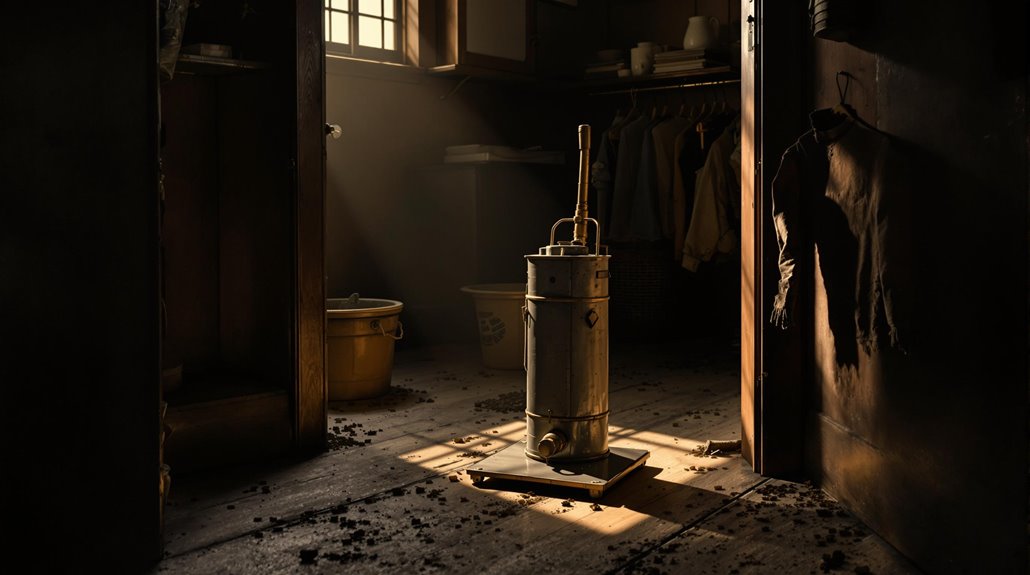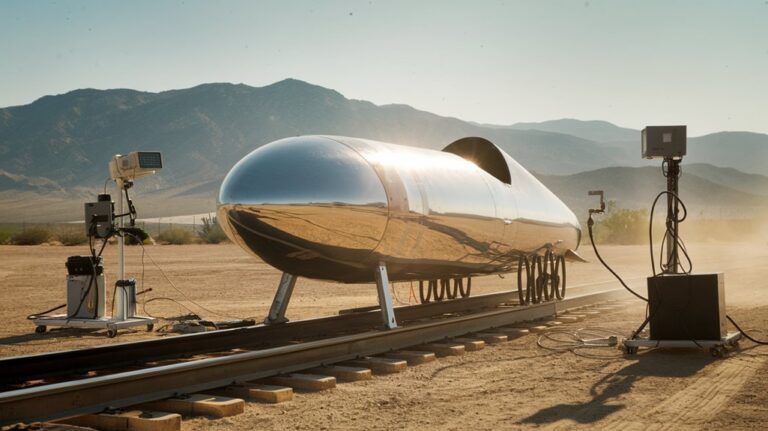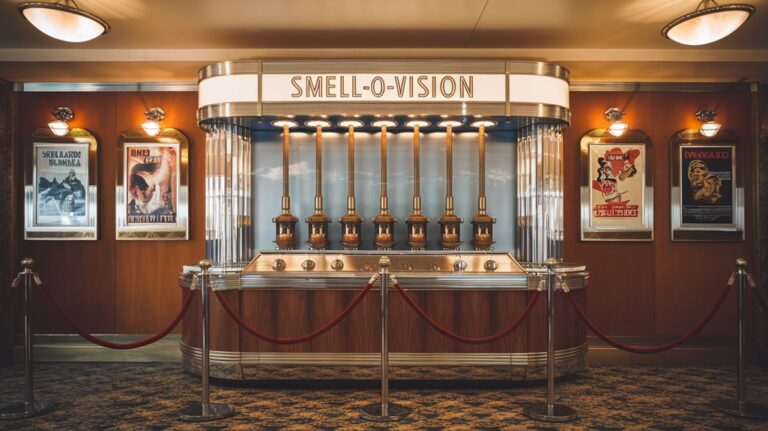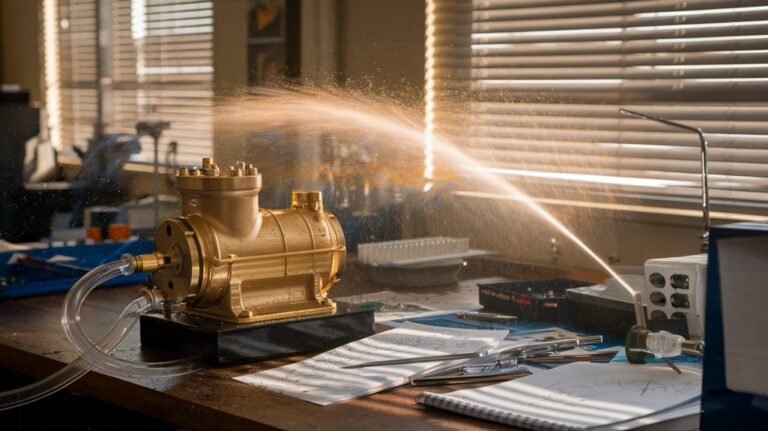Spangler’s Vacuum Wars: A Janitor’s Dust Allergy That Gave Rise to Hoover
You might be surprised to learn that a janitor's asthma attack sparked one of the most significant innovations in household cleaning history. When James Murray Spangler couldn't breathe while sweeping floors in 1907, he didn't just complain—he invented. His makeshift contraption, cobbled together from a box fan, pillowcase, and broom handle, would eventually transform into the modern vacuum cleaner. But the path from Spangler's workshop to your home wasn't as straightforward as you'd think.
A Janitor's Quest for Clean Air
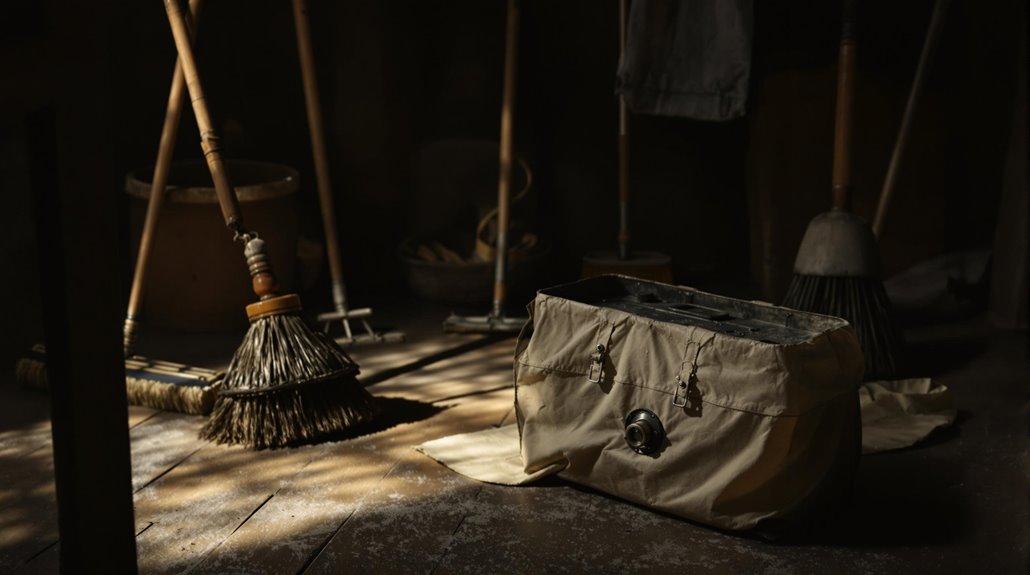
While industrial pollution choked American cities in the mid-20th century, a turning point came with the 1948 Donora smog disaster. When toxic emissions from a zinc works killed more than 20 residents and left thousands sick, you couldn't ignore the deadly reality of air pollution anymore. Local residents received settlements of $250,000 from lawsuits against the zinc company, though many feared speaking out against their employer.
This watershed moment sparked nationwide pollution awareness and led to America's first federal clean air laws. You'd see this momentum build as Los Angeles County established the nation's first air pollution control program in 1947, requiring industries to obtain permits. Users experiencing issues accessing pollution data online should ensure cookies are enabled in their browsers for proper functionality.
The scientific breakthrough came when Haagen-Smit discovered how ozone forms through photochemical reactions, shocking civic leaders into action. As air quality concerns grew, you'd witness significant progress with the banning of backyard incinerators in 1958, eliminating over 300,000 sources of pollution.
Crafting the First Electric Suction Sweeper
In 1907, janitor James Murray Spangler revolutionized home cleaning by crafting the first electric suction sweeper from everyday items. His prototype assembly included a pillowcase as a dust collector, a fan for suction, and a biscuit tin housing mounted on a wooden soap box.
He cleverly connected an electric motor to a brush roll using a leather belt for enhanced cleaning power. As a janitor who suffered from asthma, Spangler was motivated to create a cleaning solution that wouldn't aggravate his respiratory condition. His wife and daughter supported his venture by making vacuum bags at their home.
Spangler's innovative design featured several groundbreaking elements that set it apart from previous cleaning methods. You'll recognize many of these features in modern vacuums: an upright design, a cloth filter bag, and handy cleaning attachments.
After filing his patent in September 1907 and receiving approval in June 1908, he continued refining his invention through 1913. His creation outperformed mechanical sweepers and gas-powered machines, making electric cleaning accessible to homeowners.
Early Business Struggles and Setbacks
Despite Spangler's groundbreaking invention, his journey from patent to profitable business proved intimidating.
With only enough capacity to produce three machines weekly, his family-run operation faced severe production limitations. You'd find him relying on his wife and son to help assemble each unit while struggling to secure adequate funding for expansion. His first commercial model relied on an Emerson motor plugged into a standard light socket. Facing mounting financial pressure, he ultimately sold his patent to William Hoover and stepped away from manufacturing.
Market skepticism created another significant hurdle. Customers weren't easily convinced to invest in an unproven cleaning technology, especially since existing vacuum cleaners were known for being bulky and expensive.
Without an established retail network or effective demonstration methods, Spangler couldn't reach enough potential buyers. His financial constraints made it nearly impossible to scale up manufacturing or develop extensive marketing strategies, leaving him caught in a challenging cycle of limited resources and slow market penetration.
The Hoover Deal: A Game-Changing Partnership
As Spangler's fortunes began to shift in 1908, his cousin Susan Hoover unknowingly set in motion one of the most significant partnerships in vacuum cleaner history.
After witnessing the vacuum's impressive performance, she introduced Spangler to her husband William, a leather goods merchant seeking new business ventures.
The partnership dynamics quickly fell into place. William Hoover, recognizing the invention's potential, entered into patent negotiations with Spangler.
Production was incredibly modest at first, with the company managing to produce just two to three vacuums per week.
The resulting deal transformed both men's futures: Hoover purchased Spangler's patent rights and business, while keeping him on as factory superintendent.
Under the new Hoover Suction Sweeper Company banner, Spangler would receive patent royalties until 1925.
You'll find it fascinating that this partnership, sparked by a family connection, laid the foundation for one of America's most recognizable appliance brands.
The company would later be renamed Hoover Company in 1922, solidifying its place in American household history.
From Corner Shop to Global Success Story
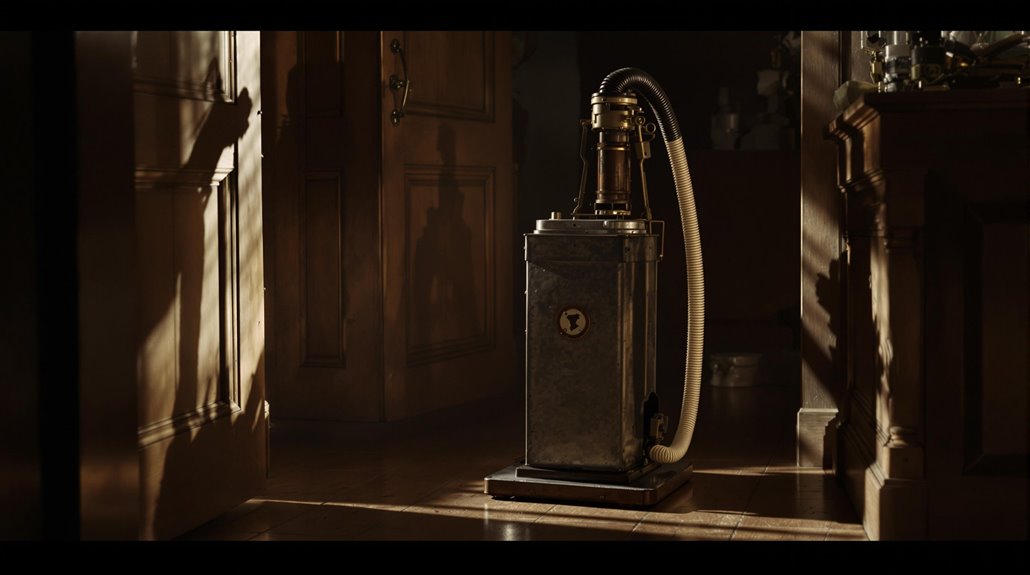
The Electric Suction Sweeper Company's humble beginnings would've amazed anyone witnessing its later global dominance. From producing just 2-3 machines weekly in 1908, with first-year sales of 372 vacuums, they'd transformed into an international powerhouse by the early 1920s.
Their innovative strategies proved revolutionary. You'll recognize their groundbreaking "beater bar" technology that boosted efficiency by 101%, while their "Positive Agitation" concept transformed vacuum marketing forever. The company's success started with five thousand dealers across America who sold products door-to-door.
Their global marketing approach started with a simple free trial offer in the Saturday Evening Post, evolving into a sophisticated dealer network spanning multiple continents. By 1923, they'd achieved $23 million in sales, with presence in Norway, France, Russia, and beyond.
In Britain, their impact was so profound that vacuum cleaning became synonymously known as "hoovering."

